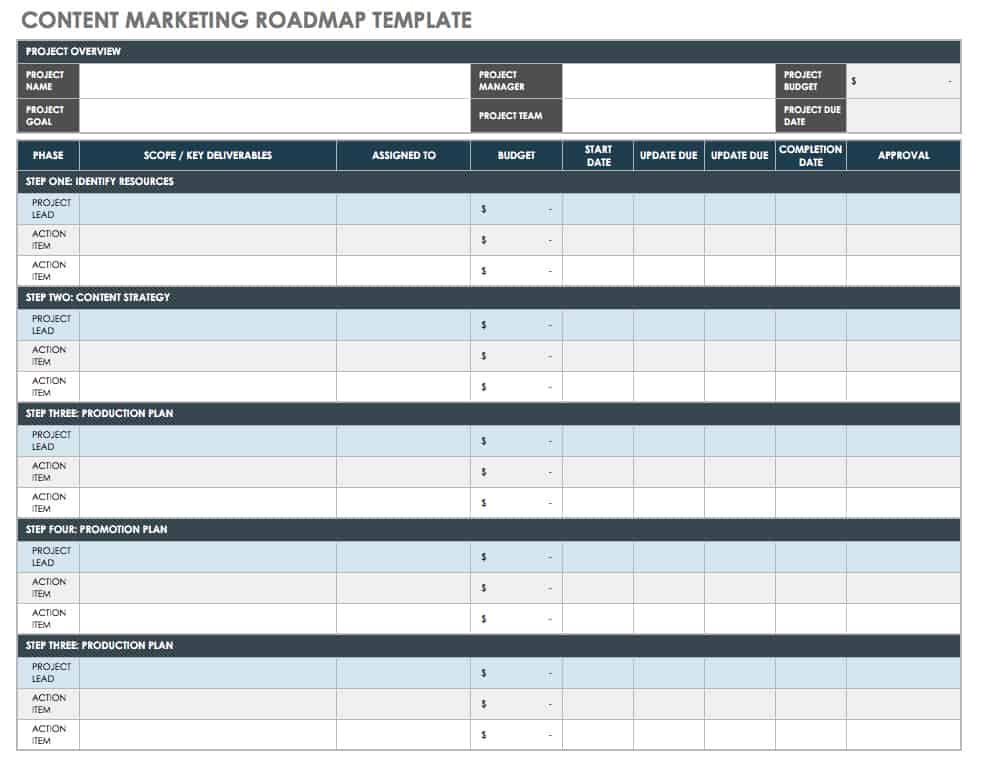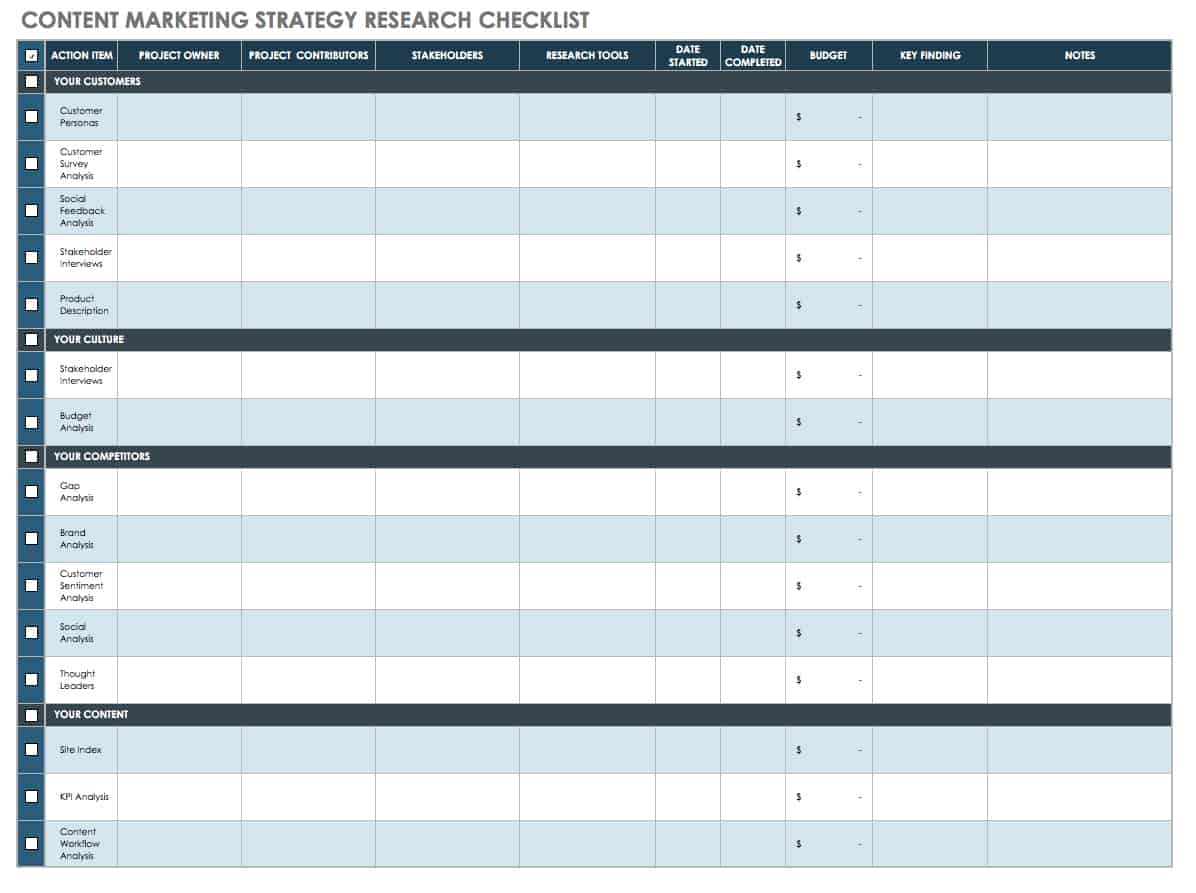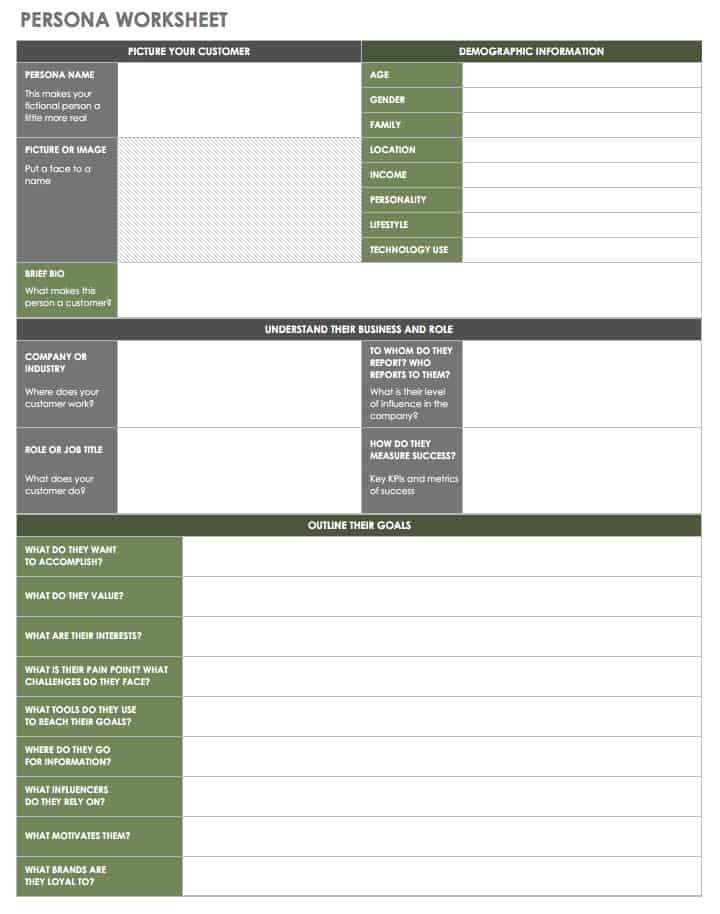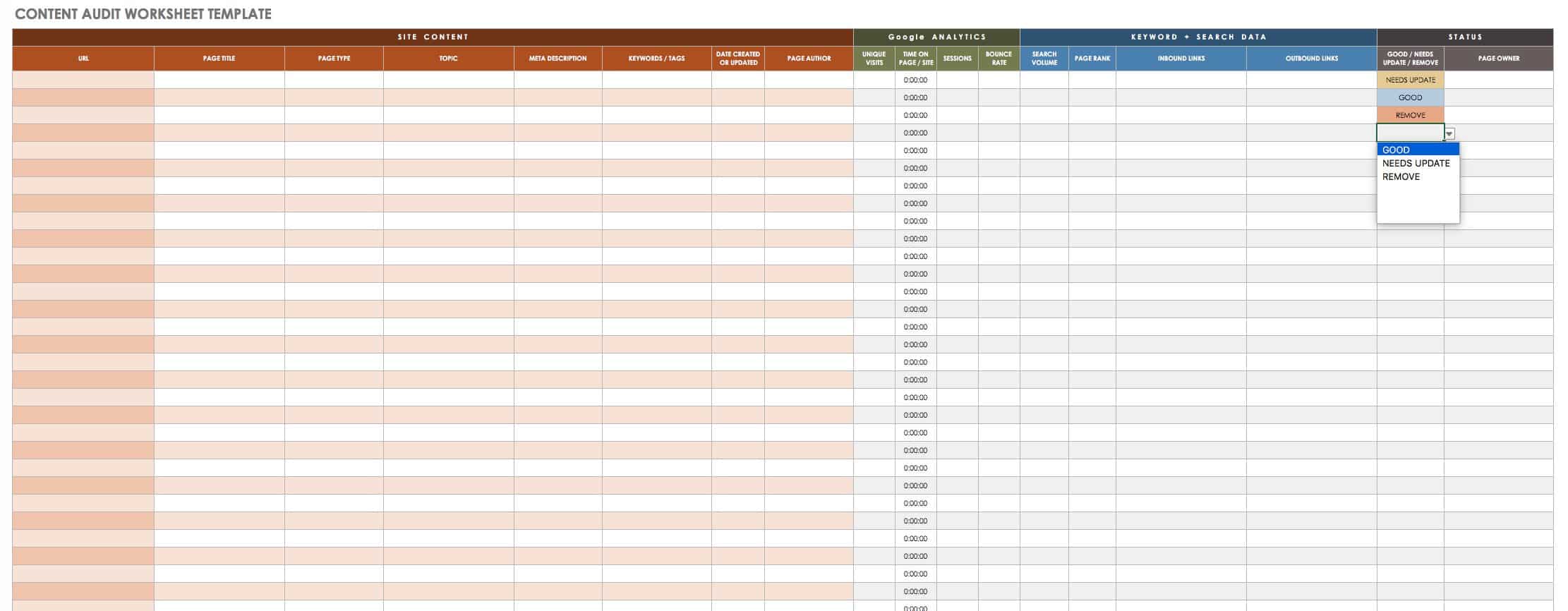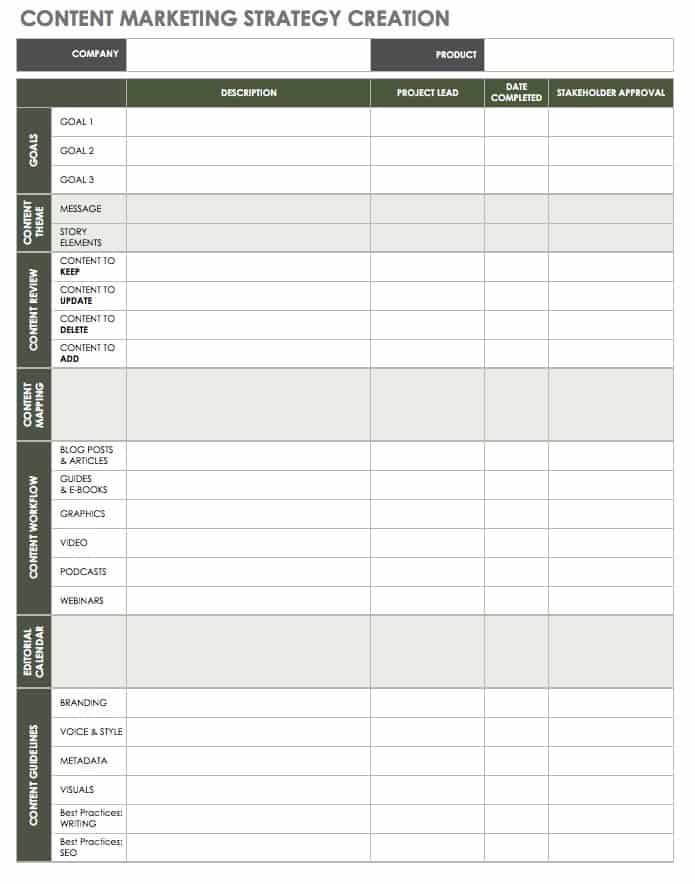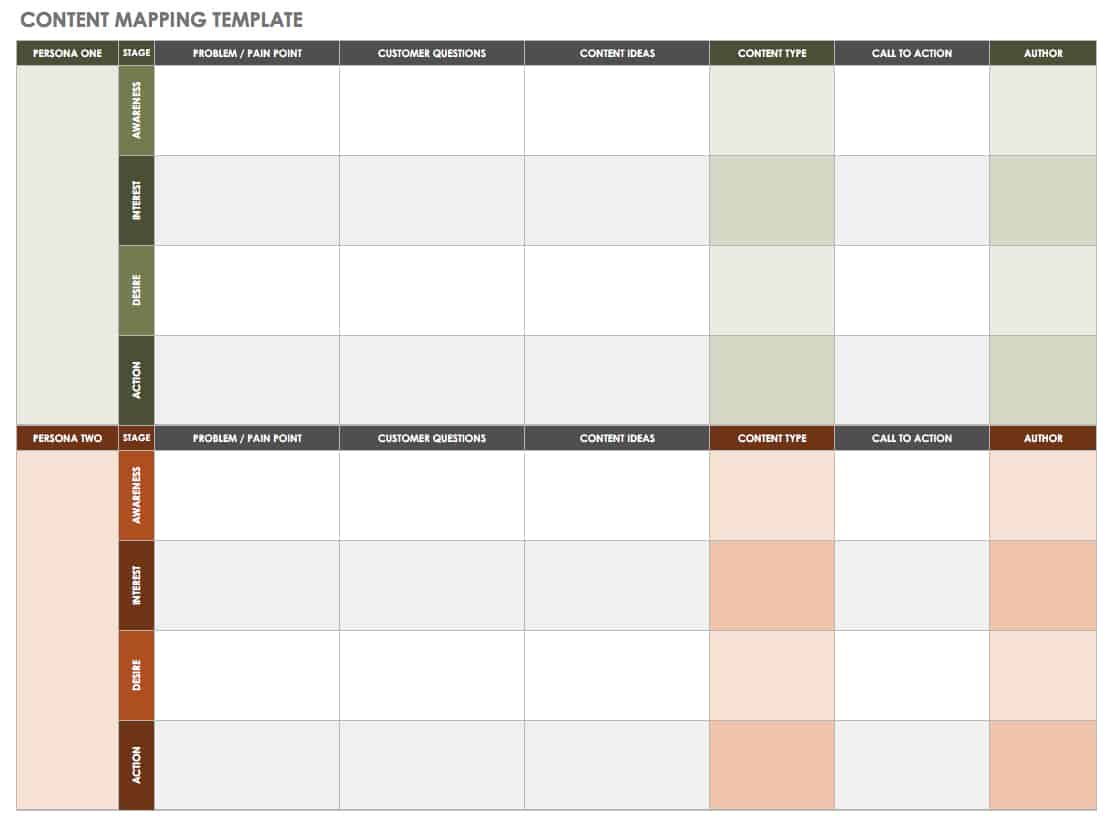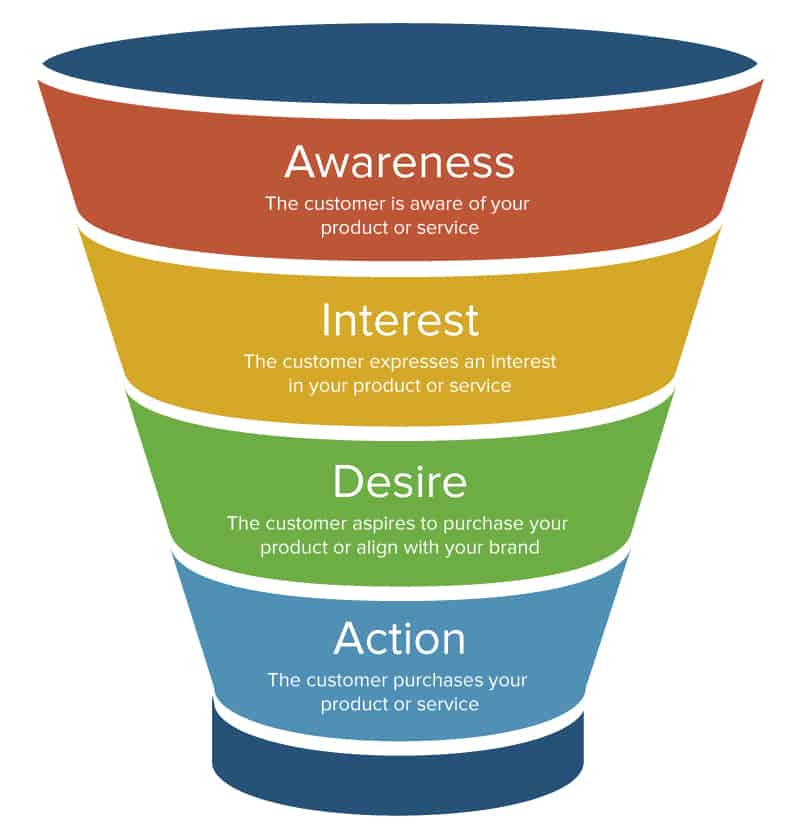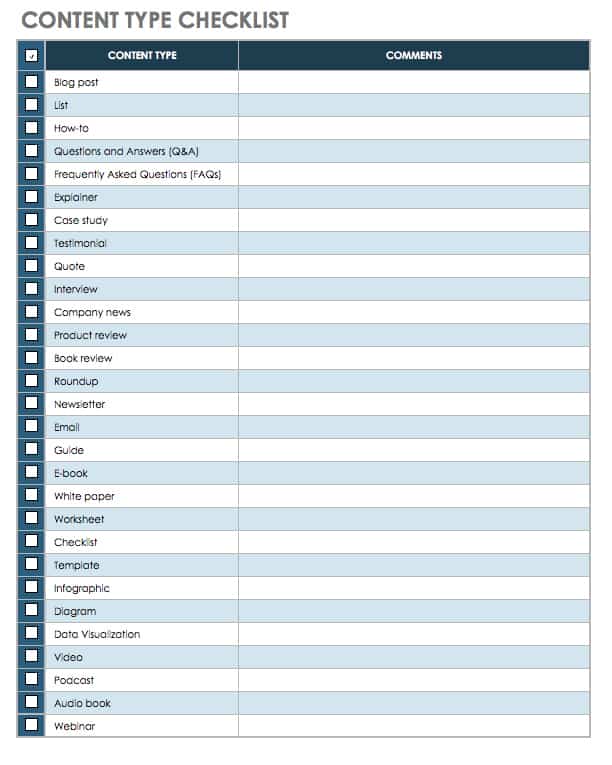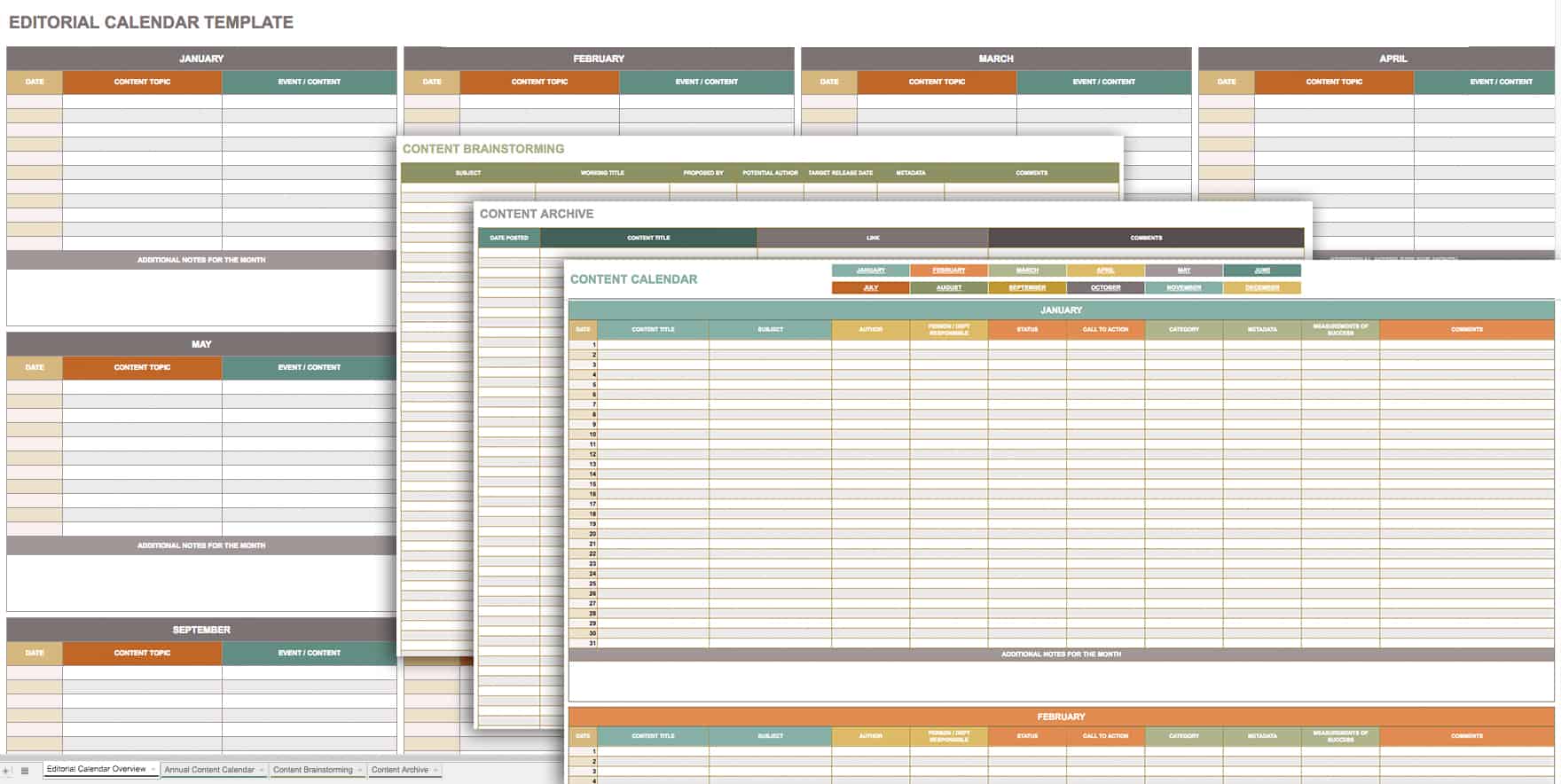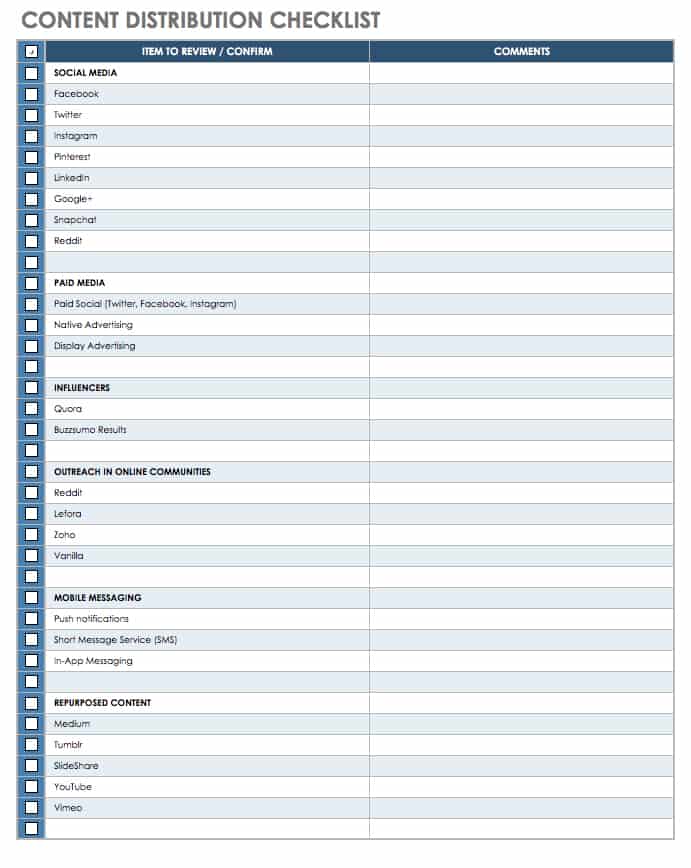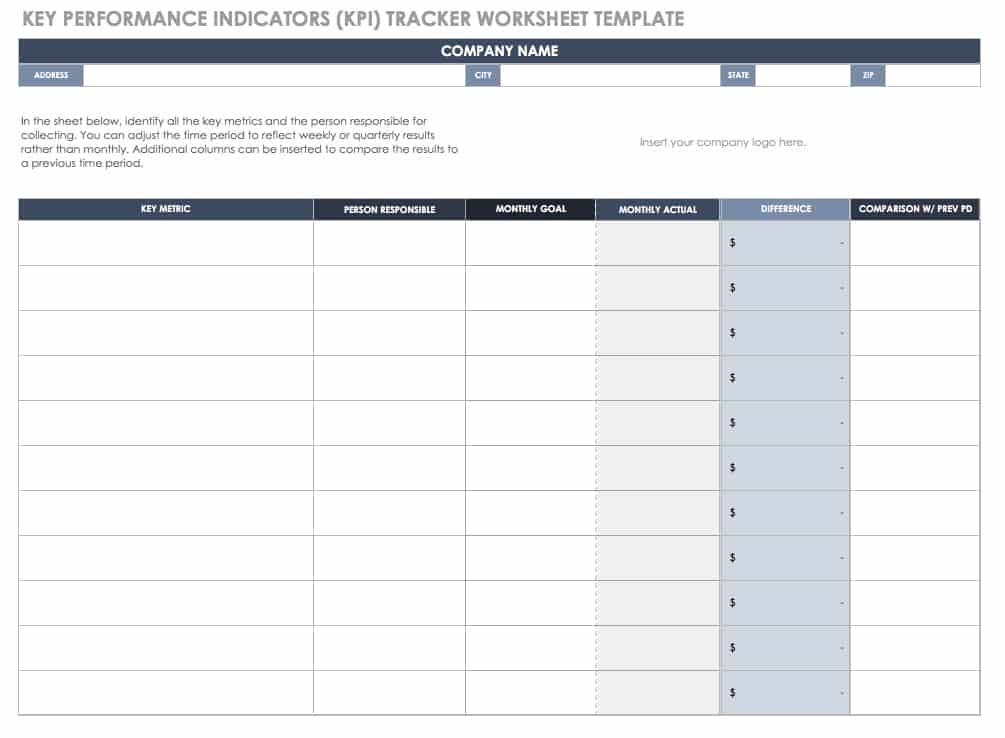What Is A Content Marketing Strategy?
Content marketing uses a unique set of channels to promote a product or service. Traditional marketing or advertising relies on commercials, ads, direct mail, billboards, and more to reach customers. Content marketing is different. Unlike traditional marketing, content marketing uses web content, videos, e-books, and other informational digital assets to interact with consumers. Think of traditional marketing as broadcasting to the widest possible audience to get the attention of the people most likely to buy a product. Content marketing makes information available online so the audience can find it.
The strategy for your content is related to the strategy for your content marketing. Content strategy helps you manage all the assets or pieces of content that you generate. The content marketing strategy is the story you want to tell your customers about your product through those pieces of content.
Your company is unique, so your content marketing strategy should be unique, too. The plan should be based on your company’s business goals and resources, including staff. It should have specific, achievable goals and still be flexible so you can build on what works and toss what doesn’t. The good news is that you can follow a tried-and-true process to build your plan. Our templates will take you through each step necessary to identify what matters to you, your organization, and your customers.
The Five Steps to Developing A Successful Plan and the Content Marketing Templates You Need to Achieve It
As you drill down to develop your content marketing strategy, you should also keep in mind that you will want to get buy-in and collaboration throughout the company. An executive summary of your goals will help other teams and company leaders support and share your vision. The bottom line is that anyone in your company should be able to tell the story that your content illustrates. Your company’s goals are your goals.
The executive summary should include your objectives and how they align with the company’s goals, the staff required, budget, plan for producing and promoting your content, and how you will measure your ROI. The process includes these five steps:
- Identify Resources: Before you can map out where you’re going, you need an inventory of your customers, your culture, your competition, and your existing content.
- Build Out Strategy: Identify the goal of your content and how it will tell the story of your brand.
- Plan Out Production: Outline the practical details of what content you will create, who will create it, and when you will publish it.
- Promote: Share your great content in ways that you can schedule and track.
- Measure Your Content: Define how you will know whether you’re successful, and how to keep improving in the content marketplace.
Use this content marketing template to develop a roadmap:
Download Content Marketing Roadmap
Step One: Identify Your Resources
Your strategy starts with an inventory of your current position. What content and staff do you have available? What do your customers say about your brand and product? What are you doing better than your competitors and where do you need to improve? What’s missing?
Download Strategy Research Checklist
Understanding Your Customers
Before you create a content strategy to reach your audience, you have to clearly identify it. “Audience” may be an inherently friendlier word than “customer,” but you want to make sure your content is welcoming. Take a look through your sales and marketing data, comments on your website, social channels, and more to get to know your customers, what they like about you, and what they need.
You may find it helps to map out a person’s experience with your company or one of your products. How do your customers find you? How do they use you? How do they let you know what they like and don’t like? This information creates a customer journey map that identifies a person’s interaction with your product or brand. Gather this information in collaboration with your sales and marketing staff. They will have valuable insight into your customer’s journey to buying (or choosing not to buy) your product.
And while you’re mapping out your customer’s journey to your product, take some time to describe that product. Identify the specific features, benefits, services, and other relevant details. When you start creating content, this description of what you’re selling and how it meets the needs of your audience will guide what you write. You will know what you want to continue promoting.
The best way to understand your customers and their journey is to create customer personas. A persona is a detailed description of your typical customer or a collection of customers. These descriptions are more than facts, however. Put a face on these profiles by creating names, and maybe adding photos, bios, and other details that summarize your customer.
Good personas are realistic descriptions that help you understand your audience. Whether you’re selling a product to consumers or a service to a business, every kind of client should have a specific persona that maps their needs to your solutions.
Use our persona worksheet to create as many customer profiles as you need. Be specific about each customer’s demographic data, their business or personal goals, and where they go for information. Once you understand each kind of customer, you will be able to create a strategy for relevant content that successfully reaches them. You can add new personas as you create new products and services.
Download Customer Persona Worksheet
Once you’ve used the personas to describe your customers and written a good description of your products, you can combine the two to identify which customers are using your product and which products can serve your customers. This map of personas and products can help you visualize what’s working and what type of content can best connect your audience to your business. Base your content marketing strategy on this map between persona and product.
Assess Your Company Culture
You need to know how much support your content marketing efforts have — or will have — in your organization. Interview stakeholders in your organization to find out where you have buy-in for marketing initiatives and identify potential roadblocks. These interviews will not only highlight challenges, but also serve to help you build collaboration across departments and with the executives who hold the keys to resources, staffing, and support you will need. Here are some of the questions to help you assess your company’s culture:
- What business objectives are most important?
- What are the key marketing objectives?
- How would you measure success in meeting these objectives?
- What marketing initiatives are already succeeding? Why?
- What initiatives are struggling? Why?
- Where is cross-team collaboration successful? Why?
- Where would collaboration help? Why?
- What resources and data does content marketing need to succeed?
- What could hinder the success of content marketing?
- What are the benefits to the company of successful content marketing?
When you understand how your company measures success and how well departments work together, you will be able to include those lessons in your content marketing plan, and also assess the resources you have and what you need to succeed.
Evaluate Your Competitors
One of the components of your persona analysis is where your customers get their information. Note that some of their sources are from your competitors. Take a little time to learn more about those companies. Remember, you are not simply competing for sales - you are also competing with them for your customers’ attention, especially on the web. You don’t have to do a full SWOT analysis, but you should collect some basic data to find out more about where customers get information about products and services that are similar to yours.
Analyze your competitors by conducting a gap analysis. Enter the keywords (not brands) you use to describe your product into SEMRush or a similar research tool. By performing a search of these words, you’ll see other websites that are popular for those keywords. Look at the competing sites and ask: What content do they offer? How does that address your customers’ wants and needs? How does your content compare? What do they do better than you? How does your content stand out?
Similar to a gap analysis, a brand analysis can highlight how the perception of your company stacks up to your competitors. A gap analysis reveals how your customers see you (and your competitors) online. A brand analysis compares your market position, voice, and values. There are a couple of good sources of information for your brand analysis.
- Your Customers: Consider conducting surveys to get some quantitative data about their experience with your brand and with your competitors’. You can also conduct interviews with customers (or former customers) to get anecdotal feedback.
- Social Channels: Monitor customer conversations on Twitter, Facebook, Instagram, and other channels to see what people say about you and your competitors.
If you want to dig deeper, consider conducting sentiment analysis. In it, you’ll use an algorithm to evaluate the language that people use to describe your business. Several companies, such as Brandwatch and CallMiner can create the required tracking to create the algorithms and reports that provide insight into how your brand is perceived.
While you’re looking at your competitors, you will also discover the thought leaders who have built an audience around their content. These experts can become contacts for you as you map out your strategy. You’ll also discover the places, or watering holes, where people go for information. What they publish, and when, can provide powerful insight for your strategy.
You can use this information in creating your content strategy to motivate your team. Seeing what others are doing provides incentives for what they are doing well and where you can improve as a group, and also helps you set content marketing goals.
Evaluate Existing Content
Do you know how much content you already have, where it lives, and its effectiveness? Conduct a content audit of your existing assets to find out what generates the most traffic and converts the most customers. An audit will also identify old or outdated content, which can either be updated or removed from your site. Plus, it will help you avoid publishing duplicate or overlapping content.
A content audit does not need to be a massive time investment in which you manually scrape your site. Several tools can automate this process for you. For example:
- Screaming Frog: This SEO Spider tool runs an analysis of your site.
- Content Analysis Tool from Content Insight: Scrapes your site not only for URLs, but also other assets such as images and video.
- Google Webmaster tools and Google Analytics: These tools provide insights into your site’s search performance and conversions.
- MOZ Open Site Explorer and Keyword Explorer: These sites let you do research into your links, giving you data about backlinks, SEO rankings, and search engine visibility.
- SEMRush: The tool shows your search traffic and backlinks.
- Hemingway App: This application analyzes your writing so you can see what content needs editing or rewriting for clarity.
- Ahrefs: Get a list of your competitors’ ranking keywords.
- Buzzsumo: Use this site to see how your content is performing, especially on social channels.
- Buffer for Business: Track your engagement and performance over time.
Use the information you gather to complete this content audit template:
Download Content Audit Worksheet Template
As you create the inventory for your content, you’ll also get a sense of how it’s created, organized, and measured. Use the information from your audit to map out your existing workflow, taxonomy, and metrics.
- Workflow: Document each step of the content creation process: Where you generate ideas, who writes the pieces, who approves and publishes the content, and how long it takes from idea to publication.
- Taxonomy: Map out the folders, tags, and categories you use to organize your content. You can identify some of this from the public-facing part of your site through the navigation and sub-navigation (those menus and sub-menus). The metadata on your site contains other kinds of taxonomy terms, including the content types, author, and publication date.
- Metrics: Identify any key performance indicators (KPIs) to measure content, how you evaluate it, and if you’ll update it. If there’s an existing process for creating and evaluating content, note the key players in that process and their roles in your organization.
Step Two: Build Out Your Content Strategy
Now that you’ve identified your content, culture, customers, and competitors, you can answer the key question: What do you want to accomplish with your marketing content strategy? To answer this, ask: What are your business, marketing, and revenue goals? Who do you want to reach and what do you want them to know?
Content marketing provides a unique opportunity to tell the story of your business and your product. It’s where you get to define your story and how you will tell it. Before you start producing a single piece of content, whether it’s a blog post, an infographic, a white paper, or webinar, you need to identify your mission, strategy, and goals.
You can’t have a mission statement for your content without one for your company. It aligns your strategy and goals within the larger framework of the organization.
Once you have a mission statement, identify the goals of your organization. Your content marketing goals will evolve from the larger company goals. Be realistic. Content can’t support every company goal, nor should it. For example, content marketing can’t address some goals regarding your culture (improving staff morale) or costs (reducing overhead by 10 percent). Business goals encompass the entire company. Overall marketing goals support many of the revenue and product goals of the company. Content marketing goals help the company achieve some of the overall marketing goals. Learn more about writing SMART goals in this article.
Content marketing goals should address specific questions: Why are you creating content? Who is your target audience? What story do you want to tell them? What is the unique value and approach that your content can provide? What experience will your content offer your customers, and at which stage of their journey?
Your content marketing strategy rests at the intersection of speaking to your customers about their pain points and how your product solves their problem. The approach, tone, and look and feel of your content will be driven by how you want to speak to your customers and potential customers.
Content strategy, and all content marketing, is a form of storytelling. Think of those fairy tales you heard as a child. There was a problem (a big bad wolf), a conflict (pigs who were trying to protect their homes from the wolf) and a solution (building a brick house to keep the wolf out, at least until he fell down the chimney).
Content strategy can follow a similar outline. The “plot” of your content follows the tried-and-true formula of beginning, middle, and end. Introduce the problem, explain the conflict, and offer a resolution. You’ll also want to consider these storytelling elements to shape your story:
- Characters: Who is having the problem? From personas to testimonials, you can put a face and voice to the situation.
- Setting: Where does the story happen? Is the problem at home, at work, outside, at a desk?
- Motivation: Why would someone want to solve this problem? Or is it simple enough to just walk away and leave the situation unresolved?
- Emotion: Memorable storytelling goes beyond the facts to highlight sorrow and joy.
- Connection: A good story makes the audience feel like they are included in the experience. The story relates to them in a real and personal way.
There’s one more benefit to your content strategy: Once you define your strategy and goals, you can create a culture of content throughout your organization. When everyone understands the value of the story of how your product connects to customers, more internal stakeholders will want to tell that story. The culture of content expands throughout your organization and influences the way you perceive your brand and the way your brand is perceived by your audience.
You can formalize and legitimize support for your content strategy by creating a stakeholder register. Identify the key stakeholders, their titles, and departments. Dig a little deeper by describing their roles in content creation and distribution. Interview the stakeholders to identify their expectations for content strategy, the ways they prefer communication as you move forward, and their influence on your strategy and execution. Read The Definitive Guide to Stakeholder Management for tips on how to develop a plan to keep them engaged in the process.
Dig deep into the creation of your strategy. Use our project brief template to create an overview of your strategy. It will walk you step-by-step through setting goals, defining your audience, telling your story, allocating your budget, and more.
Download Project Brief Template
Step Three: Use Content Strategy Templates to Plan Out Production
Once you’ve done your research and identified the story you want to tell about your product, it’s time to plan the specifics of your content and how it will connect to your users. Here’s where you put all the information you’ve gathered into an action plan that generates results.
Download Content Marketing Strategy Creation Template
Your content strategy roadmap will ensure that every piece of content (blog, video, tweet, post) has a purpose and fits with your story. The roadmap will help you prioritize your efforts and assign resources in a way that keeps you and your team focused and successful. You’ll create a realistic plan that fits the time, staff, and budget of your team. Plus, you’ll be able to prioritize your efforts so your hard work generates the greatest results.
Now’s the time to review what is and isn’t working with your content. Identify what your content needs to succeed. With your content research in hand (from the Content Audit worksheet you’ve completed in step one) you can see what’s been successful and what hasn’t quite hit the mark. What makes a piece of content successful? Consider these elements:
- Traffic
- Backlinks
- Social Shares and Comments
These metrics tell you if your content is easy to find, relevant to your audience, and timely. Other factors that can affect your content include how well it aligns with your brand and messaging, and whether it is easy to access across platforms (from smartphone to tablet to computer). Quality also matters. Is your content clear, easy-to-read, and free of grammar and spelling mistakes? Do your graphics have a professional polish to them? How quickly does the video load, and how long does it play? The easiest thing for any customer to do is click to another site. You want to provide an engaging and relevant experience.
You’ve now got guidelines for creating new content and what makes content successful. But what about existing content? Use your guidelines to decide what to keep in its current form, what needs revising to meet your new standards, and what you can delete or retire; then prioritize that long list of content assets. Now that you have a sense of the scope of your content, you can decide whether you want to create new content first, revise existing content, or scrap outdated assets that aren’t relevant to your strategy.
Now everyone in the organization, including all key stakeholders, can be on the same page about the kind of content you want and the story you want to tell. Armed with a shared vocabulary and mission, you continue to build a culture of content.
If you are putting existing content on a new site, you will need to develop a content migration plan. Manually entering all articles, images, infographics, white papers, and other content on a new site is time consuming, so you can work with the IT department and other teams to develop automation tools that import content to a new system.
Migrating Existing Content
When you identify which content assets you’re revising, plan where you will revise them. Some organizations find it easier to work within an existing platform and then migrate the copy as part of a site-wide plan. Others prefer making the revisions on a new site because it helps their team learn how to use the new system.
By working across departments to build your migration plan, you reinforce the value of content marketing to your entire company. Use a content mapping template to create a plan.
Download Content Mapping Template
The Role of Personas and the Content Journey
Useful content takes your customers on a journey from awareness to action. The personas you created describe your potential customers and their pain points. Your content should guide them along the process of product discovery to the point of purchase. Remember, your content strategy is not a linear journey for many people - they may engage with your content in fits and starts until they are ready to make a purchase. Therefore, you need to map your content to all stages of the journey.
The content journey stages are similar to the traditional marketing funnel: awareness, interest, desire, and action. (Elias St. Elmo Lewis developed the concept in the 1800s. William H. Townsend built on the concept with the “marketing funnel” in 1924.) The stages are:
- Awareness: A person realizes the problem and knows about potential solutions, which you hope includes your product or service.
- Interest: A person is looking for the product or service that will solve the problem.
- Desire: A person is evaluating products to see which one best solves the problem.
- Action: A person decides whether your product is the best solution and buys it — or keeps looking at other options.
Your content map, which coordinates the persona with the stages of decision-making, will guide the tactical messaging for each piece of content you create.
The Many Forms of Content
Content can take many forms, from blog posts to white papers, e-books, podcasts and more. Text can take many forms: You can even package basic copy as a blog post, a list, a how-to or guide. Regardless of the type of content you create, it should answer your customers’ questions, offer product highlights, and compare your solution to your competitors. Content lives on various pages on your site, including landing pages, feature pages, channel pages that aggregate content by theme or topic, or even microsites dedicated to a specific product or service. Each of those pages have different requirements. Here’s the most common types of content:
- Lists are a quick hit of highlights (think Buzzfeed).
- How-tos introduce a problem and help your reader solve it. Good how-tos offer step-by-step details that walk your reader through the solution.
- Questions and Answers (Q&A) follow a simple formula of asking then answering a question.
- Frequently Asked Questions (FAQs) let you answer a wide range of your customers’ common questions in one place.
- Explainers imagine your customer asking “why,” and use the article to offer all kinds of information about why your product was developed.
- Case studies let your customers explain how your product solves their problem.
- Testimonials and quotes are shorter case studies that tell your story in the words of your customers.
- Interviews expand the voices in your content. Interviews may include your customers’ voices, but also feature thought leaders who can talk about industry trends and other valuable insight.
- Company news gives your customers an inside look at how your company makes decisions and responds to industry needs.
- Reviews provide some expert analysis of products, books, videos, and services that addresses the problem your customers are trying to solve. As a bonus, you can show your authority in the topic by sharing your expertise and recommendations.
- Roundups aggregate and curate what others are writing about the topic. You can offer one-stop shopping for people who are just starting their product journey with this type of content.
- Research illustrates your authority on the topic. Be careful to not get deep in the numbers. Highlight trends and takeaways for your readers.
- Newsletters and email campaigns push the content from your site to your customer’s in-box.
- Guides, e-books, and white papers provide your readers with in-depth coverage of a topic. This long-form content should be the definitive piece of information about a problem and possible solutions.
- Worksheets, checklists, and templates let your customers learn by doing. Turn your insights into action by giving your customers a way to work through their problem and solution.
- Infographics, diagrams, and data visualization help your customers see the solution through compelling graphics that walk them through your product.
- Video, like text, can take many forms, from an interview to a how-to or testimonial. Customers can also share video easily, which helps you grow your audience.
- Podcasts and audiobooks are a highly portable kind of content. People can listen to them on their commute, at the gym, or while working around the house.
- Webinars give your customers the chance to put a face to your product or brand. Use webinars to do everything from demonstrating your product to interviewing thought leaders.
Use this checklist to identify the type of content you want to create and the frequency at which you’ll distribute it:
Download Content Type Checklist
Set a Schedule and Commit to It
Regardless of the format, each piece of content should convey a message that relates to your central theme or story. Not every call to action will be the same, and not all content covers every message (nor should it). But if you’ve created an overarching story that speaks to your mission, strategy and goals, then any piece of content should tell part of that story. As you create content, ask: How does this fit with our story?
Many marketers and advertisers follow a 70:20:10 model for prioritizing their content efforts. Typically, spend 70 percent of your time and money on efforts that already are successful. Spend the next 20 percent on improving or iterating on those efforts to attract a new audience. Finally, spend 10 percent experimenting with new ideas.
In addition to deciding and prioritizing your content, you also need to decide who will produce it, review it, publish it, monitor it and update it — and then make sure everyone knows who’s responsible at each stage. Communication among your team is critical for a smooth content marketing experience.
The content workflow outlines the process from idea to analytics, maps out who is responsible at each point, and estimates how long each step will take. Armed with this knowledge, you can identify the resources you have and the resources you need to execute your strategy. You can set realistic goals about the capacity of your team, and address any gaps that appear.
As you plan your content and workflow, you need a calendar to keep track of all the moving parts. While you may be able to plan a year’s worth of content at a time, you may find that executing on the vision is not practical. The calendar should be detailed enough for you to have a solid understanding of the coming days and weeks, with a longer view of the next quarter or a year at a glance. Calendars are useful tools for mapping out the big pieces at a 30,000-foot-view, and then seeing the details as the days and weeks unfold.
Download Editorial Calendar Template
One more thing: Calendars won’t do you much good if you are the sole keeper of the schedule. Make sure everyone on your team (and other stakeholders as needed) can see, share, and contribute to the calendar to keep them on track and give you a way to measure the work. Learn more about how to plan a marketing calendar in this article.
Assembling A Content Team
Armed with all this organized information, you can now identify your staffing plan: Who you will need on your team to create, evaluate, and monitor the work. Remember, a content marketing strategy starts with a vision. Typically, the person driving the content strategy is the company’s CMO. While not a member of your team, this person will set the direction that your efforts supports. The size of your content marketing team will depend on the size (and budget) of your company and the scope of your work. Some of these roles should be filled with staff, but you may consider using freelancers to fill in the gaps.
The head of your content marketing team can go by several titles: chief content officer, content strategist, managing editor. Regardless of the title, this person is responsible for defining the story behind your content, ensuring you deliver a consistent message, and supervising the creation and measurement of the team’s work. The strategist oversees the editorial calendar and serves as project manager who directs the other team members.
The writers and designers who produce your content work with the managing editor, as do those who curate outside content that can be repurposed for your company. Whether your team consists of internal employees, freelancers, or a mix of both, make sure they all have access to the editorial calendar and understand your audience personas.
Make sure a second set of eyes reviews your content to ensure it meets your storytelling guidelines, follows a logical structure and flow, and avoids grammar and typographical errors. Some organizations hire editors who work with content creators. On some teams, the writers review one another’s work.
You’ll also want a community manager (sometimes called a chief listening officer or even a director of audience) to monitor feedback about your product or service. This is more than customer service: This person follows your content channels and monitors the conversations that will eventually shape future content. If one piece of content gets a lot of traction on social media, with outside influencers or in comments on your site, this person will offer insight into what’s working and why, and suggest ways to create more content that builds on your success. Following conversations about customers’ pain points, this person will be able to identify gaps that your content should fill. Ultimately, a community manager is your in-house expert on what’s resonating with your audience. Depending on your resources, you should consider adding a public relations or promotions person to work with your community manager. This person spends his or her time making connections, especially through social media, and may coordinate the messaging on your social channels.
Add an analytics expert to the team so you know what’s working, what can work better with a little revision, and where you need to change tactics. This can range from the timing of your email or blog posts, to conversion trends or SEO tactics. This is where you measure your work based on your SMART goals.
You’ll also need to tackle the technical aspects of publishing your content. Whether the writers and designers produce their work into your content management system (CMS) or someone else gathers the assets and publishes them, a team member needs to get the work in a form that your audience will find. If your business has other web assets, you may find a way to combine efforts across departments. You’ll also want someone who’s tracking the trends in technology so you can take advantage of the latest production tools, editorial calendars, and analytics services that help you succeed.
If you have the opportunity to choose a CMS, take the time to identify the functions you need. Are you publishing blog content? Do you need an e-commerce engine? Will you wall off some content in a members-only section? Do you need different white-label sections or microsites? Will you publish in multiple languages? Will one CMS handle all your content or should you consider a suite of tools and platforms? Because you’ve already mapped out your content strategy, you know the types of publishing the CMS will have to support. But you don’t need to make the decision alone. Take advantage of the opportunity to work with your IT department, and generate buy-in and support throughout the company for your content strategy.
One more consideration: If you have content in multiple languages (or plan to start creating content in multiple languages) you’ll need to develop standards for localization and translation. Valuable content that engages readers must be more than a blog post that has been translated in another language. First, it must be localized so that the information is culturally and professionally relevant to your audience based on the personas you develop. Once you localize that content, you can translate it for an international audience.
Governance Guidelines
Governance guidelines set the standards for your content and ensure a consistent experience for your audience. These guidelines spell out your brand, design, style, voice, metadata, and more. What do you consider the best practices for writing, design, and SEO? Spell it out for everyone who plays a role in creating and monitoring your content. You can’t effectively promote your product and business if your messaging and content doesn’t speak with one brand and voice. Your governance guidelines should include:
- Branding: These guides help designers, writers, and community managers present a unified look and feel to your audience, especially in terms of graphics and typography. Here are some examples of what a branding guide can include from Berkeley, Medium, and the American Red Cross.
- Voice and Style: All your content should have the same distinctive tone, no matter who creates it. Imagine if your brand could speak: What words would you use to describe your brand’s presence and promise? Style is part of your brand’s voice. Think about the length of your sentences and paragraphs, tweets, and Facebook posts. Style extends to your internal guidelines around what you capitalize and hyphenate. “Make it easy on your readers,” says Mark Allen, the owner of Mark Allen Editorial and a board member of ACES: The Society for Editing. “Consistency provides clarity and inconsistency affects your credibility. Show readers that you care about what you’re doing.”
- Metadata: This is the “data about your data,” and it describes each piece of your content. Metadata will include the author’s name, the type of content, the date it was created, the size of the file, and so on. It helps readers find your content online. Develop a plan for what metadata you want to include in each asset and be consistent with capturing the information. This will improve your ability to track and report your traffic and audience engagement, so your team can focus on creating more content that resonates with readers.
As part of your governance strategy, you want to establish and stick to best practices for your content. Here are some suggestions for writing for the web.
- Write for the Reader: Use the words, vocabulary, and sentence structure that appeal to your personas. Stay away from jargon or too many abbreviations or acronyms.
- Write in Active Voice: Follow the “who did what” formula. (For example, “The dog bit the boy,” rather than “The boy was bitten by the dog.”)
- Be Relevant: Give readers the information and answers they are researching, and help them solve the problems you identified in your persona research.
- Be Concise: More and more customers are seeing your content on mobile devices and tablets. Don’t make them scroll or swipe too long to get to the point of your article.
- Offer a Call to Action (CTA): Tell your readers what you want them to do: Click a link, fill out a form, download a guide, or even buy your product.
All content marketers want their work to show up quickly when customers search for it. The search engines want users to successfully find what they want. So, search engines like Google and Bing continue to tweak the algorithms that deliver content. That means there are few hard-and-fast rules for search engine optimization. There are, however, guidelines to help your content stay relevant and easy-to-find.
- Write Clear and Consistent Tags and Descriptions: Title tags should include the keywords that your readers might be searching for, and meta descriptions should use those words in a way that readers would enter their query in a search engine. Your own guidelines should include preferences for title tags, meta descriptions, header tags, and keyword phrases.
- Avoid Keyword Stuffing: Don’t repeat keywords for the sake of packing them in and trying to rank higher. Search engines are now programmed to devalue that duplication. Use keywords in ways that provide value to your audience without seeming overly spammy. You want readers to stay on your site, not bounce somewhere else.
- Don’t Forget Your Images: Use basic descriptions in your alt text for images, video, and other kinds of visual content. Search engines see these words when they are indexing your site. And this makes your site more accessible for the visually impaired, which helps you reach a larger audience.
Step Four: Plan Your Promotion
Now that you’ve got a plan for creating and publishing your content, you need a plan to promote it beyond your website. You can share or talk about your content through a range of external channels, including social platforms, thought leaders who see the value in your work, and the communities that talk about the problems your products and services solve. Just like you’ve created priorities with your content, you need to set priorities for your promotion. Not every piece of content gets equal promotion on all channels. The value of your content (or product or service) drives the amount of effort you put into promotion. Consider using the following tactics:
- Social Media: Facebook, Twitter, Instagram, Pinterest, LinkedIn, and Google+ are great ways to reach your audience and build relationships. Create different versions of your content, mix it with a variety of images, and you’ll reach a wider and more diverse audience.
- Paid Media: This includes paid social and native advertising. Before you commit budget dollars to this, make sure you know what results you expect so you can measure the ROI.
- Influencers: In the research phase of your content strategy, you identified thought leaders and influencers who guide the conversation for your personas. Consider reaching out to them to share or contribute to your content.
- Outreach: Niche communities gather online to talk about the pain points your product addresses. Join in the conversation where they gather.
- Push Notifications and Short Message Service (SMS): Depending on how your audience likes to consume content, consider getting on the most valuable real estate of your customers: The front of their mobile phones. However, don’t overwhelm with an onslaught of messages.
- Repurpose Content: You can republish a blog post on Medium, turn a slide deck into a shareable presentation using SlideShare, or put your video on YouTube. Make sure to link back to your site so you can measure what audiences you’re reaching on these platforms.
Outline your promotion plan with content distribution checklist.
Download Content Distribution Checklist
Promotion succeeds with planning and tracking. You’ll want a calendar to track your promotional efforts and measure their effectiveness. This process can be part of your overall editorial calendar, but you may find it more effective to keep a separate promotions calendar. A schedule helps you see what you’re sharing, especially on social, and it helps you assign and monitor the workflow.
Consider a couple of workflow approaches, depending on the size of your team. Either the person producing the content can produce the related posts and tweets, or you can devote separate staff to handle promotions. Either way, make sure you have guidelines for the writing and visual look of these efforts. And, of course, you’ll want to track your efforts and tweak your plans based on what’s working — and what’s not.
Step Five: Measure Your Efforts
Don’t rely on your gut or anecdotal evidence to feel successful. Refer to your SMART goals so you can measure the impact of your hard work. Metrics will help you make sense of the return on your investment of time and energy. Just like there are a variety of ways to publish and promote your content, there are a wide range of tools and approaches to measure your work. Prioritize the information that gives you clear takeaways so you can use it to improve your work and grow your success.
Numbers need to be tracked consistently and at intervals that provide context. A jump in 24 hours may not mean much, or it could mean you have killer content. Compare similar time frames to avoid false reporting.
Measure Content Production
Track how your readers touch your content with content scoring. Assign each content type a point value. You can base this on the personas you are trying to attract, the depth of the content, the call to action, or other responses you want to evoke. The efforts you value more should be given higher point totals. Then, combine your analytics with the point totals and see what’s really working. The data will let you compare your assumptions about your audience with their behaviors. You will quickly identify which content you should keep producing.
Measure Content Quality/Consistency and Improve as Needed
Readers value high-quality, consistent content. Some of your governance guidelines will help you maintain those standards when creating content. But you can also review your content later to see if it has the anticipated impact. One way to start that process is to conduct another content audit. Look at the traffic and audience, see how well each article has performed since publication, whether you need to update or delete it, and if there are gaps since the last audit.
Take a look at what’s popular - is it top 10 posts, top categories, top authors, or another content type? Pick a timeframe and a format and see what content gets the highest numbers. Identify the elements that draw traffic. You could add these pointers to your governance guidelines. As a bonus, you can repurpose well-performing top 10 lists into a new post to promote older content.
Use Google Analytics to see your top landing pages and your top exit pages. These metrics will help you identify what content is drawing traffic and, more important, what content drives traffic away.
Measure Engagement and Performance
From traffic to views, links, and shares, a multitude of numbers can provide insight into your content’s performance. Since you’ve established your goals, you can identify the data points that tell the story of your content. Here are some KPIs to consider:
- Awareness: Web traffic, page views, video and slideshow views, social chatter, search results
- Engagement: Time spent on site, heat maps, bounce rate, blog comments, likes/shares/tweets, forwards, inbound links, return traffic
- Lead generation: Form completions, e-book or guide downloads, email or blog subscribers, followers
- Sales: Completed purchases, online sales, offline sales, conversion rates, time to close the sale
- Customer Retention and Loyalty: Percent of content consumed by existing customers, return rates, search queries, customer support
- Upsell and Cross-Sell: Revenue from upsell, sales for new products
Learn more about KPI dashboards by reading All About KPI Dashboards. Get started tracking your KPIs with the free worksheet below.
Download KPI Tracker Worksheet
Measure Content ROI
Any successful business focuses on the return on investment (ROI) for every initiative and product line, which includes the overall marketing department as well as content marketing. Before you measure your ROI, understand how your company measures success and how your success is aligned with the overall marketing goals.
You can provide some key numbers because you have created a thoughtful and well researched content marketing strategy. You know how much time it takes from idea to content creation to analytics. You know how effectively you are reaching your goals — not just revenue goals, but engagement and brand awareness. Now it’s a matter of communicating the return on the investment.
Every touch of your contact has a value. You may start with some simple numbers such as Cost Per Click (CPC) or Cost Per Lead (CPL). You can calculate the value of a subscriber to your blog or newsletter, and the sales you generate from those leads. If you follow these steps and use the free content strategy templates in this article, you are well on your way to achieving your content marketing goals.
Improve Content Strategy Efforts with Smartsheet for Marketing
The best marketing teams know the importance of effective campaign management, consistent creative operations, and powerful event logistics -- and Smartsheet helps you deliver on all three so you can be more effective and achieve more.
The Smartsheet platform makes it easy to plan, capture, manage, and report on work from anywhere, helping your team be more effective and get more done. Report on key metrics and get real-time visibility into work as it happens with roll-up reports, dashboards, and automated workflows built to keep your team connected and informed.
When teams have clarity into the work getting done, there’s no telling how much more they can accomplish in the same amount of time. Try Smartsheet for free, today.
